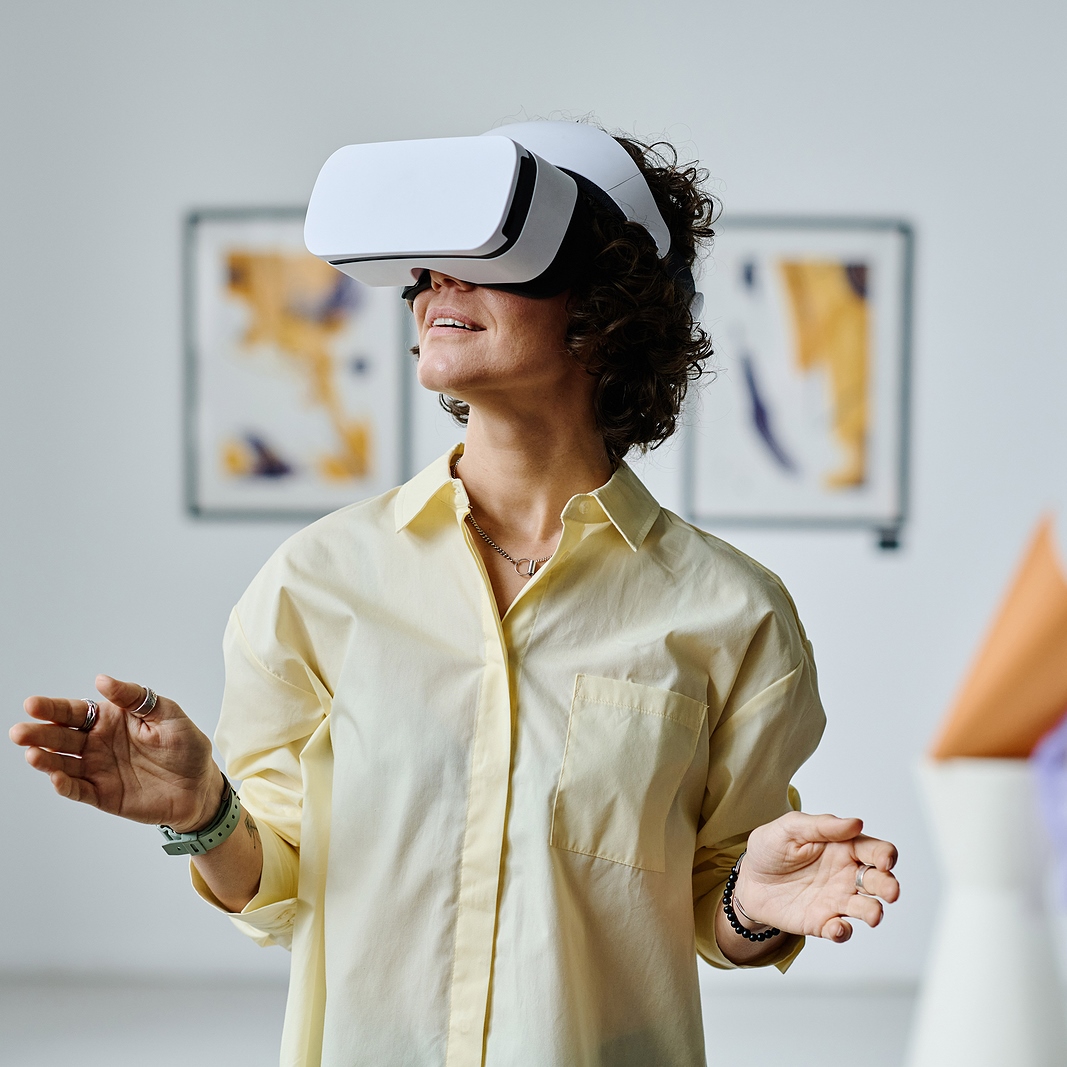For a long time, art exhibitions failed to reach a global scale due to physical limitations, but the launch of digital platforms has changed this forever. Art now reaches beyond borders to a wide range of audiences, giving it new markets.
Virtual reality is changing the way people interact with and experience art. Today, art galleries and museums can preserve artworks in unprecedented ways. The preserved artifacts and collections can be shared in digital versions, allowing global access. Through technologies, visitors engage with attractive 3D models in the virtual gallery space.
They view collections from a variety of perspectives where they get deeper details beyond what was possible in traditional art. Digital art has democratized access to collections while mixed reality has made it possible to mix both the virtual world and physical world. Their evolutions have impacted growth in a big way.
Art collections in the digital age
The way people engage with art is evolving fast due to new technologies. The internet has made it possible to do online shopping and visit virtual exhibitions. Whenever they create or add a new collection, artists post it online. This quickly allows a global audience to view the collections through digital platforms. Moreover, collectors can enjoy richer and more varied encounters with art.
Digital platforms have made virtual spaces more popular. Museums, galleries, and individual collectors invest more in displaying their collections online. Since geographical restrictions are no longer available, it is easier to target visitors beyond the physical exhibitions. These opportunities have expanded the scope of art in a way never seen before.
It is always exciting to visit different art galleries and museums online. However, a slow computer can affect your experience when visiting digital exhibitions. Although the MacBook is designed to run fast, there are several things that can affect its speed. The storage could be filling up fast, or there could be a lot of cache in memory storage. Limited space in Mac affects its streaming speed. If you want to enjoy viewing art from your MacBook, it is crucial to make sure it is running faster. A fast computer is a basic need for every activity these days, so you need to follow the steps in the link to fix your slow device.
The rise of mixed reality in art
The world has recorded a particularly fascinating progression in the field of art. VR technology is expanding every possibility in this field. This technology is helping push the limits of artwork and completely changing the approach to how artists produce their work. Due to VR, they present their work and engage with it in an entirely new way.
It is helping blend aspects of the traditional world with the virtual world. These two aspects are rising in popularity fast due to the growing VR and AR technologies. Whether they visit a physical or virtual exhibition, visitors get a chance to get immersed fully into dynamic and interactive art displays. As an artist, you can use these new techs to push the limits of conventional forms. Pushing beyond limits helps increase audience engagement and the success of your show.
The continued growth of online sales
A report by Art Basel shows sales in the art field have been growing by 3% per annum since 2019. Digital growth has helped push its growth more than expected. Specifically, online sales have been growing at an impressive rate. Virtual galleries have become an important component of this field, helping individuals, exhibitors, and other sellers reach wider markets.
Art collectors nowadays no longer have to spend time traveling around the world. They can look for unique collections online and make orders. Online platforms have helped new business models of artists rise. The internet allows interaction directly with audiences. That’s why novice artists need to take advantage of virtual galleries and make sales globally. Besides, due to advancing technologies, you can also ship your art internationally with ease.
Using AI to help with authentication
As the art market grows in the virtual world, concerns continue to grow about the origin of collections. More people want to know whether the collection they are buying is authentic. Technology is providing answers to such challenges all the time. Today, customers can use AI to compare artworks stored in large databases across the world.
AI systems have been trained to analyze and confirm the authenticity of the collections. Authentication through AI is helping combat artwork fraud and preserve cultural heritage. It increases the legitimacy of online sales in virtual galleries and offers extra security to buyers.
Greater institutional involvement with digital art
The potential of the digital world is growing daily. Traditional institutions have recognized this and embraced the role played by digital art. Nearly every museum and gallery today has a digital exhibition platform. This reflects their wider recognition of digital art.
They embrace it as an important and respectable medium for artistic expression. Traditional institutions are not only investing in online platforms today. They also invest in educational initiatives and collaborative projects. These projects and initiatives bridge the gap between the online world and real works of art.
Conclusion
Virtual galleries are changing the field of art more than ever. Due to the virtual world, there is more inclusivity, participation, and accessibility at a global scale. Art production and authentication are different today due to technology. Moreover, the importance of virtual galleries will continue to grow. As digital technologies develop, virtual galleries will define how people interact with culture and the way the creative world will grow.
